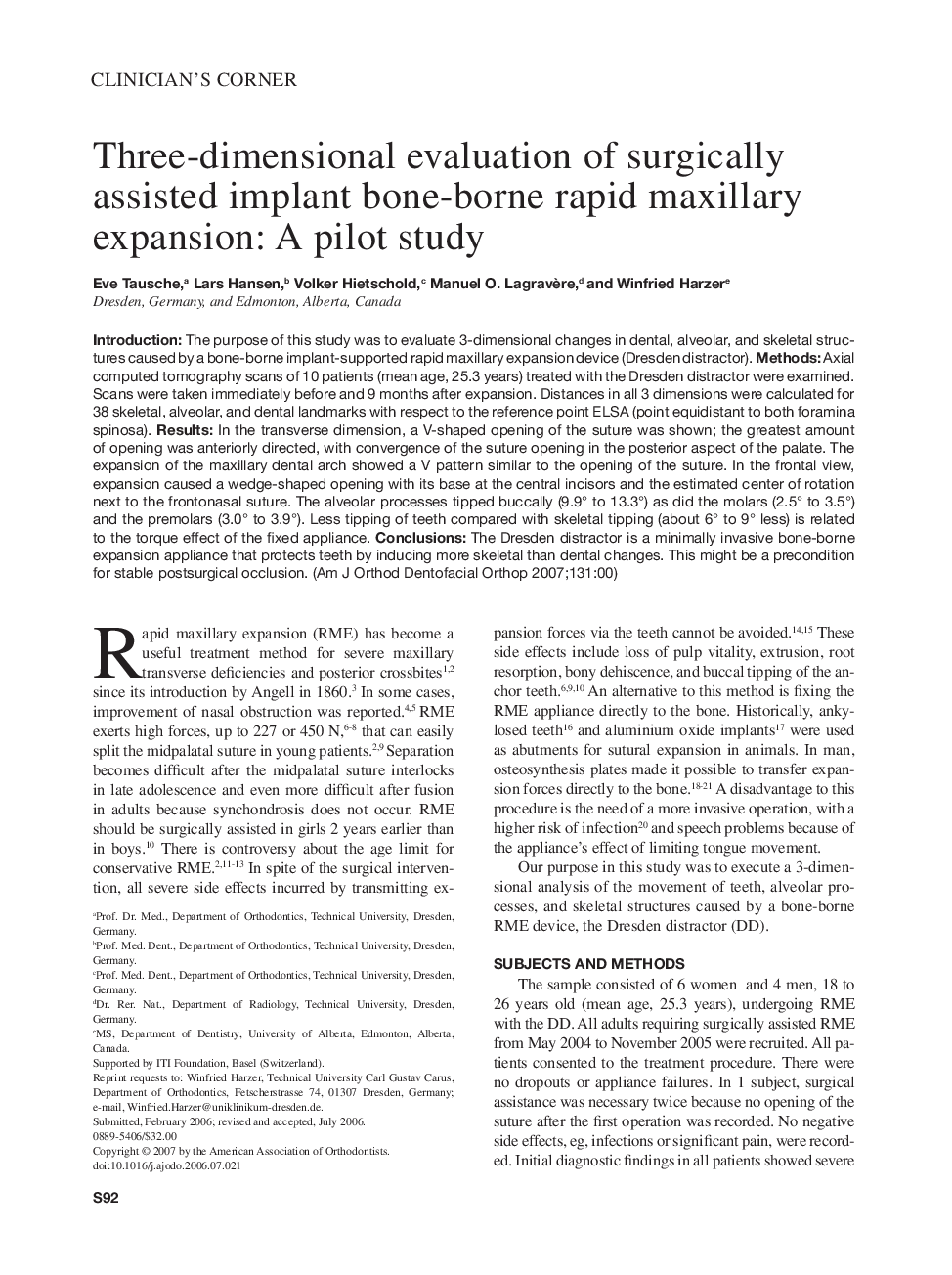| Article ID | Journal | Published Year | Pages | File Type |
|---|---|---|---|---|
| 3119601 | American Journal of Orthodontics and Dentofacial Orthopedics | 2007 | 8 Pages |
IntroductionThe purpose of this study was to evaluate 3-dimensional changes in dental, alveolar, and skeletal structures caused by a bone-borne implant-supported rapid maxillary expansion device (Dresden distractor).MethodsAxial computed tomography scans of 10 patients (mean age, 25.3 years) treated with the Dresden distractor were examined. Scans were taken immediately before and 9 months after expansion. Distances in all 3 dimensions were calculated for 38 skeletal, alveolar, and dental landmarks with respect to the reference point ELSA (point equidistant to both foramina spinosa).ResultsIn the transverse dimension, a V-shaped opening of the suture was shown; the greatest amount of opening was anteriorly directed, with convergence of the suture opening in the posterior aspect of the palate. The expansion of the maxillary dental arch showed a V pattern similar to the opening of the suture. In the frontal view, expansion caused a wedge-shaped opening with its base at the central incisors and the estimated center of rotation next to the frontonasal suture. The alveolar processes tipped buccally (9.9° to 13.3°) as did the molars (2.5° to 3.5°) and the premolars (3.0° to 3.9°). Less tipping of teeth compared with skeletal tipping (about 6° to 9° less) is related to the torque effect of the fixed appliance.ConclusionsThe Dresden distractor is a minimally invasive bone-borne expansion appliance that protects teeth by inducing more skeletal than dental changes. This might be a precondition for stable postsurgical occlusion.
